Q&A: Two Young Appalachian Activists on the 2020 BLM Movement and What’s Happened in Their Community Since
By RAINESFORD STAUFFER
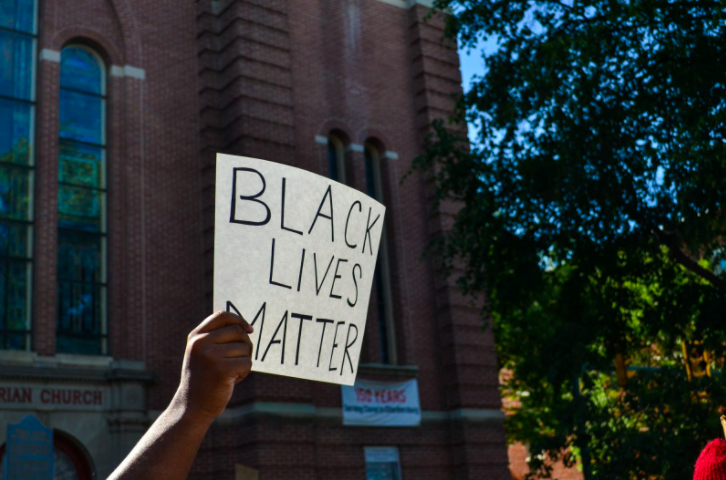
This article was originally published by 100 Days in Appalachia, a nonprofit, collaborative newsroom telling the complex stories of the region that deserve to be heard. Sign up for their weekly newsletter here.
During Black Lives Matter rallies that swept Chambersburg, Pennsylvania, last summer, Madison Mellinger and LeShan Wilkinson, both 20, began documenting the movement in the community as part of a personal photo project.
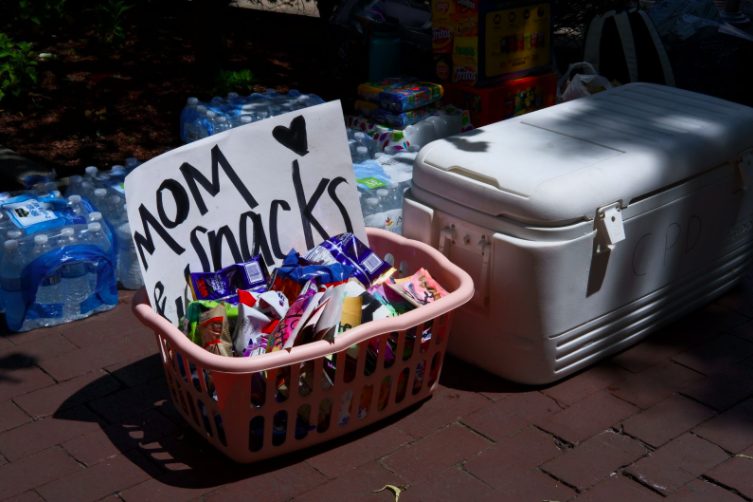
The image that stands out most in their minds a year later is the same for both: Mom snacks.
The photo, of a laundry basket full of snack foods bearing a handwritten sign declaring “mom snacks,” was an encapsulation of small town protest, Mellinger says, in which someone’s mom toted bags of chips and pretzels around as though it was a soccer game.
During marches in Chambersburg, police officers set up cones in order to contain participants to a designated area and passed out water, Wilkinson tells 100 Days, explaining that, “It kind of had that community feel. They know what we’re doing and they understand what we’re doing is important, so they’re going to help us, but we’re also protesting them.”
Last summer, rallies against ongoing police violence and in response to the killings of Kentucky’s Breonna Taylor and Minnesota’s George Floyd were international in scope, from marches of thousands in cities like Los Angeles, Washington, D.C., and even Paris, to small gatherings in rural communities. Appalachia was no exception.
While engaging in a critical inflection point of America’s history of ongoing systemic racism, young people like Mellinger and Wilkinson were face-to-face with a nuanced illustration of what small-town protests say about a community at large, including white saviorism and how it manifests, and the relationship between the community and local police.
They also see last summer as one part of an ongoing fight for more just communities. Friends since a high school Latin class, the pair reconnected through their experience last summer, and have since spearheaded initiatives to create change on a local level, including running an Amplify Black Voices campaign through a local book drive, launching a first-person narrative project to center voices in their communities, and creating a platform to ensure information on local candidates and races us accessible to voters.
Yet, a lot of activism stems out of churches in the community, so Mellinger found herself interested in how religion and activism go together in spaces like the BLM marches. Mellinger points out that gun control was and still is a touchy topic in her white, fairly rural community — and saw people threatening violence through Facebook.
“There were counter protests that happened because of these protests,” Wilkinson recalls. “So, it was like what we were doing was very…it was important, but there was a lot of backlash to what we were trying to do.”
Wilkinson says there were points of the summer where the community felt united in fighting for Black lives, whereas a whole other facet of the community “was like Black lives, all lives, you know?” Wilkinson described it as, “typical, which is extremely sad.”
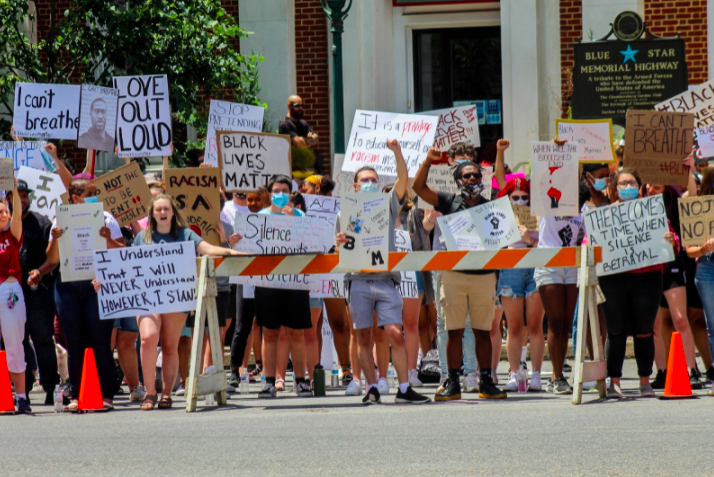
Although they grew up in the same community, Wilkinson and Mellinger say their individual life experiences inform their work in different ways.
“There were certain things that we couldn’t do and certain things that we could do,” Wilkinson says of how he was raised as a Black teen in a rural place. “We always had to have our hands visible in public. We alway had to get a receipt with a bag.”
“When our parents tell us to do something, especially mine, I’m like, ‘Okay, mom, whatever.’ But this is real and it’s something that is alive and well in our country — racism is what I’m talking about.”
Mellinger says Chambersburg is more diverse and has a stronger progressive community than more urban and suburban areas give it credit for. Still, Mellinger says, Chambersburg remains majority white, and the seat of a red county. Having real conversation about change in communities like Chambersburg means capturing that nuance. “It motivated me to change the narrative about my home community,” she says.
Of their photos, Mellinger and Wilkinson want to emphasize that, “Students who protested in the streets nearly a year ago are still working steadfastly to create lasting change,” they shared via email. The photos represent, in many ways, a starting line: It’s a snapshot of a turning point in a community, but one that is just a beginning. Both saw the summer as one in a series of long-term steps in building a more equitable home.
Wilkinson and Mellinger spoke with 100 Days in Appalachia’s Rainesford Stauffer about the wave of work last summer sparked, their reflections on photos from that pivotal summer, and where we go from here.
Responses have been lightly edited for length and clarity.
Rainesford Staufffer: What gave you the urge last summer to document this moment in history?
LeShan Wilkinson: I’ve always had an interest in photography. Going into my spring semester of freshman year [in college], I took a photography course. It was a film photography course, so we had a film camera and film. We had leftover film because we had to switch to digital, because of the whole virtual learning thing. So I just had a bunch of film leftover. I was like, “I’m not letting this go to waste,” so I decided to pretty much document not only the protest, but also my whole year, so when I do put it into prints, I can look back and be like, “Wow, 2020.”
Madison Mellinger: Unlike LJ [LeShan], I had no photography experience going into the summer. For the research that I was doing [with a professor at Columbia who studies youth in Chambersburg], the professor was like, “I really want people to see what rural America looks like.” I think they have a conception about what it looks like, but don’t actually know. I was photographing the whole town earlier in the summer, and then when these protests are happening, I was like, “I have to photograph this.”
I wrestled with what an ethical photograph at a protest is and how to protect people’s identities if they wanted that. I think it’s just so important to local history and for future generations to see what was happening at this time and continue to be inspired to make change.
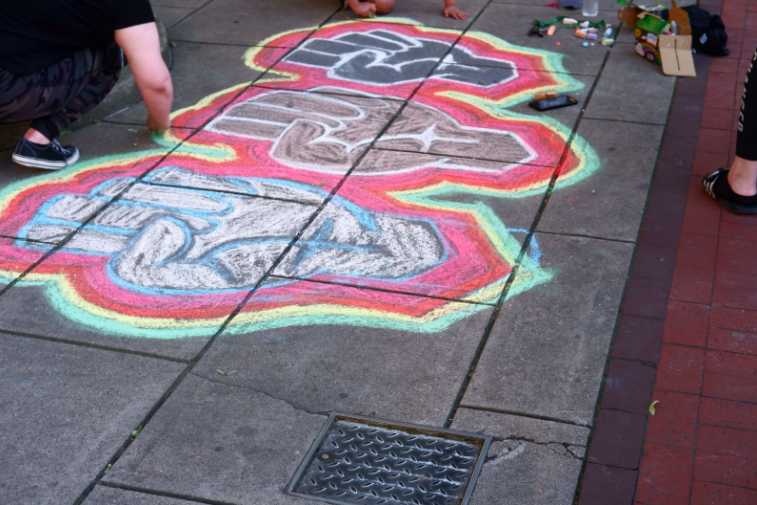
RS: What work are you doing beyond the context of these protests and documenting them to create that change?
MM: Since 2018, I’ve been working with a group — and LJ is part of the group too. It is a local book drive that I co-direct with another Princeton student from Chambersberg. In the past two years, we had just been collecting books and donating them during the holiday season. With the events of this past summer, we decided to do an ‘Amplify Black Voices’ campaign. As part of the book drive, we collected books by Black authors and handed them out at protests in hopes that people would continue to educate themselves.
Our whole idea with handing out books by Black authors was that the school needs to change their teaching staff and continue to bring in more teachers of color, but in the meantime, change their curriculum to include more authors of color. We were hoping to just offer that to the community, along with a statement to the school that they should continue to work in that direction.
LJ and I are also working on a first-person narrative project [on Instagram] where we share narratives from the community, and we kind of frame it as local news, but it’s people writing firsthand accounts of the local news. In small towns, people tend to not trust big media, especially reading things like The New York Times. I think they kind of think, “What does this matter to me?”
I think local news is very biased oftentimes and quite skewed, and also just dying where we live as well. Local news is not really supported in Chambersburg. With this project, we were hoping for people to be able to read stories directly from their neighbors and people that they know and trust in the community, and hope that they’ll know and trust this news better.
LW: It really just tries to get the voices of the people that aren’t being heard — the marginalized voices that aren’t really being hit in the big, or even the small, news organizations that already exist today.
[In addition], I am on the advisory board for the district attorney. From the Love Demonstration — which is the first two photos that Madison has — we sparked the conversation [between community members and law enforcement]. From there, we decided that it’d be a good idea to have some type of advisory board to kindle the relationship. It’s called the Franklin County District Attorney’s Advisory Board for Race and Reconstructive Justice. We meet twice a month and just try to foster a relationship between law enforcement and the community, and try to see how we could better the relationship that we already have.
My friends and I have also created a platform on social media to make sure that local elections are at the forefront of people’s minds. We contact candidates running for each position, and we break down what the office that they’re running for is. Then, we have interview questions that they answer to just to determine if they’re the right fit for our community.
The presidential election just happened, and the local elections get on the back burner and people aren’t as hype about it. But this is where most of the change happens.
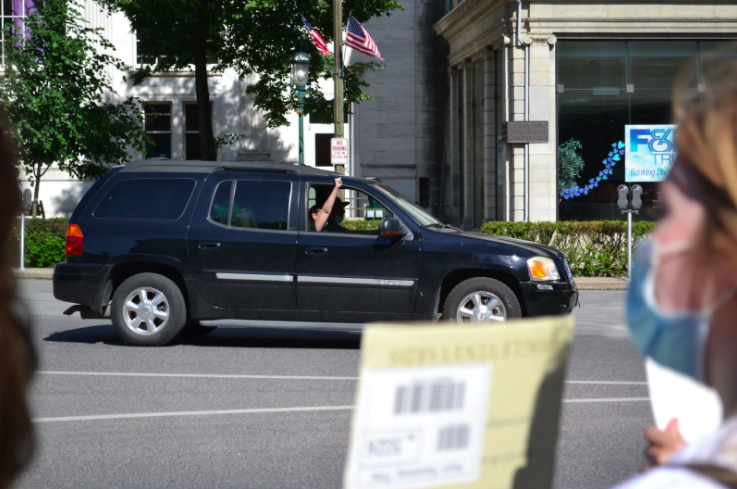
RS: For young people, either in your communities or in different parts of Appalachia who want to be involved in bettering their communities, what advice would you share?
MM: I think something I would say is maybe look for local activist networks, which I know can be hard in some areas. I think especially in small towns, it’s really easy once you’re connected to one person, you become connected to this whole network of people that want to make change in a lot of different ways. I think kind of finding that one in finding that one person to connect to is really helpful to me. And having mentors to learn from that have been doing this work in the community.
I think in rural places it can be scary sometimes because you might feel like you’re the only young person doing something. But trying to find at least one other person, a mentor, someone that can do this work with you — I even think of LJ as a mentor sometimes. I think we learn from each other.
LW: It’s funny you say that because I was like, “I literally look up to Madison so much.”
I feel like I would say create a space where your voice is heard, and where you can voice your opinion and make your voice known. I would say go to your school board meetings, go to your local council meetings. If they’re not willing to give you a seat at the table, then make your own.
Editor’s Note: This story was updated on June 6, 2021, to clarify that Mellinger was assisting a Columbia University professor who was conducting research in Chambersburg, not for a class at Princeton as previously reported. It also adds detail that Chambersburg is a majority white community.
